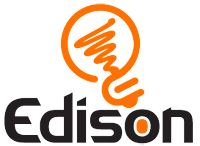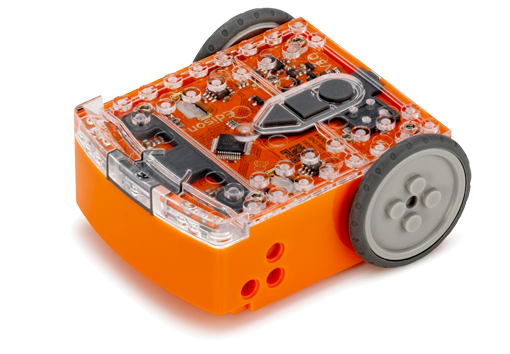What’s your STEM program goal right now?
Dreaming of creating a maker space? Looking to implement dedicated project-based STEM learning into your curriculum? Or maybe you are just trying to update the equipment you already have?
No matter what you are trying to do, chances are you won’t be successful without support. Whether it’s getting your principal, a department head or even the Department of Education on board, you have a much better shot at getting your plans off the ground with backing and buy-in from others.
Many teachers aren’t sure how to approach their principal (or other powers-that-be) about projects they are keen to implement. Fear of getting knocked back and the hectic day-to-day schedule at school mean many educators never even ask. Those who do ask often don’t know how to go about making their case and may not be successful.
A bit of preparation, and knowing what to look out for when you present your case, can make a huge difference. If you are smart about your approach, respectful in your pursuit and willing to do the legwork upfront, you may find your school is ready and eager to support you.
Here are five tips to help you gather the support you need to make your STEM dreams come true.
Tip #1: Put together your ‘passion’ presentation
When trying to get buy-in for your plan, one of the worst things to do is ‘just wing it’. If you don’t have your thoughts and facts together, you will be hard-pressed to make a cohesive argument. Putting together a presentation is a great way to organise your points and get your message clear. You can create a slide deck, write up a report or put together notecards with speaking points. Even if you don’t think you will end up using your presentation in your meetings, creating one will help you nail down everything you want to say.
Your presentation doesn’t need to be long, dry-and-dull or overworked. (In fact, those are all things to avoid!) Aiming to have about 15 minutes of presentation material plus additional supporting information to use to respond to questions and follow-up discussions is a good rule of thumb.
The point of your presentation isn’t to strongarm your audience into seeing things your way. It’s to show them what you want to do and why you want to do it. The ‘why’ part is often neglected in these presentations, which is a real missed opportunity. Passion begets passion. And passion is almost always the underpinning reason for wanting to try something new, STEM or otherwise. That’s why you shouldn’t just make a presentation: you should make a passion presentation.
What is it about your plan (or even STEM in general) that’s got you excited? What, explicitly, is it that you want to do and why do you want to do it? What is it about this proposal that resonates with you? Get this ‘passion’ captured as a sentence or a short paragraph. Write it down to get it clear in your mind. You can expand on this central point throughout your presentation, but make sure you have your main point down pat. Being able to communicate cleanly why your proposal is exciting to you will help you concisely explain it in all the conversations (verbal or written) you will need to have as you progress your proposal. Moreover, by starting from the point of your passion, you will inspire others. People can feel and respond to energy, especially when it’s easy to understand.
Once you have your key passion point, expand your presentation with other critical information, like how your project will support learning outcomes (see Tip #2) and what your plan will cost (see Tip #3). When your presentation is ready, practice running through it a few times to make sure you have covered everything and feel confident to say it to your principal.
Ambushing your principal in the noisy lunchroom or at the end of a frantic day is unlikely to get you the attention your presentation deserves. Instead, set up a meeting in advance. Write your principal an email telling them that you have a proposal you would like to discuss and ask them when you can meet for half an hour to go through it. Showing respect to their schedule and demonstrating that you are prepared are both solid ticks in your favour. Setting aside a dedicated time will also let your principal concentrate fully while you pitch your plan.
Tip #2: Prepare an example of an integrated lesson
While your passion may be the force driving you, it might not be enough to convince others of the benefits of your plan. Another key component is showcasing how your proposal fits into the wider vision of your school.
What’s your principal’s ‘bottom line’ motivator? Is it test scores? Literacy? Graduation rates? Be prepared to explain how your idea will help achieve their goals too.
One great way to show how your plan ties into the larger objectives of the school is by preparing an example lesson that highlights how your idea, and STEM more broadly, will support other learning areas. You would be hard-pressed to find an educator who doesn’t appreciate the value of literacy and numeracy, so these are great subjects to choose. For example, mathematics and robotics are fantastic classroom companions. Demonstrating how using robots enhances a geometry lesson can help you explain the value of buying a class set. Likewise, if your school is looking to build students’ 21st Century Skills (such as collaboration, communication, creativity, problem-solving and resilience) highlight possible projects that focus on developing these competencies.
Including an example lesson or two in your presentation can help you prove the value of your plan before it even gets underway!
Tip #3: Get your budget in order
Money. It’s possibly the scariest and most difficult part of kicking off any new program. Asking for a lot of cash can be a time consuming, challenging and nerve-racking process. It can also feel like a vicious circle: funds need to be pre-approved before you can plan what you want to buy, but you need to know what you want to buy to seek out funds.
Rather than just asking for cash and seeing how much you can get, pre-plan a few budgets. Show what you will be able to purchase for different amounts and how those tools will be used to support the learning objectives you are targeting.
Include your budget requests along with supporting information explaining the reasoning for your requests in your presentation. Make it clear that you’ve done your research too! One way to do this is by including multiple budget proposal options, each costing the same amount but containing different brands or bundles of items. Side-by-side comparisons of what you can purchase can help you demonstrate the value of your top choices, especially if you can use the information to show what you will be able to do with each option.
Having your proposed budget written down in a clear, easy-to-read way makes it easy for others to understand what the money is for and appreciate that your proposed purchases get the most bang for their buck.
Tip #4: Have a ‘plan B’
Just like you, your principal wants what is best for the students. That’s why they have to be thorough in their evaluation of which new initiatives to support. Before you get their backing, you may be asked to provide more ‘proof’ that your plan is good for the kids and will deliver results. One way to address the question of proof is to turn to your PLN (Personal Learning Network) and ask other teachers to share their stories and outcomes. Another option is to start small at your school. A great place to begin is by creating a tech, coding or STEM club (whichever is most appropriate to your goals). This doesn’t need to be fancy or a major commitment for students initially. Even just an open invitation to the kids to come ‘mess around’ with the topics at lunch or recess is a good way to create initial interest and start to demonstrate value.
If you know your principal is the type to want proof, plan on addressing this concern before they even raise it. Include a staged approach to rolling out your STEM initiative in your presentation. Early stages should be low cost/low risk, such as providing activities for indoor recess. Then progress up to something bigger, like a club or an elective class, before you get to your larger-scale initiative. Having stages that can be evaluated along the way can make it easier to get that initial ‘yes’ and get the ball rolling.
The second major point of resistance teachers commonly face when trying to get a STEM program started is a lack of funds. Even if you have a brilliant budget proposal (see Tip #3), you might hear that there simply is no money for your plan. If your school doesn’t have the money or isn’t willing to part with it yet, look at what other pathways exist for you. Check for grants and other funding options outside the traditional budget of your school. PTA groups, private sector companies, not-for-profit foundations and other sources of funding offer alternative pathways to the bureaucratic budget system and are well worth looking into.
Tip #5: Don’t wait for ‘stuff’ to get started
If your STEM program dreams are grand, you may not be able to get everything in place straight away. Don’t let that stop you from getting started! Jump in with low-cost or no-cost activities to build interest in your students, school and the community.
You can do more than you might think with just a little bit of funding. Can’t afford a class set of robots yet? You can still teach a lot with just one robot. No budget for new laptops? You can still start teaching coding – no computers needed. As you build enthusiasm for what you are doing, support (including money) tend to follow.
There is an incredible community of STEM-supporters online with lots of ideas you can use to help get started. Check out sources like CS Unplugged and Teachers Pay Teachers for free or low-cost materials and lessons. Social media is a treasure trove of low-and-no-cost ideas as well. Search Pinterest for the topics you are keen to teach and you are sure to find some inspiration. Tap into your Twitter and other online PLNs too – many other educators have been through the same struggles and will have great ideas for you to try.
Be sure to track your efforts as you go. Take and share photos of students engaged in and enjoying your activities. Make notes about what you spend and what you get out of it. Start to build your STEM program bit by bit. By the time you put together your next passion presentation, you will have even more information to back you up and get buy-in to take your STEM program to the next level.



